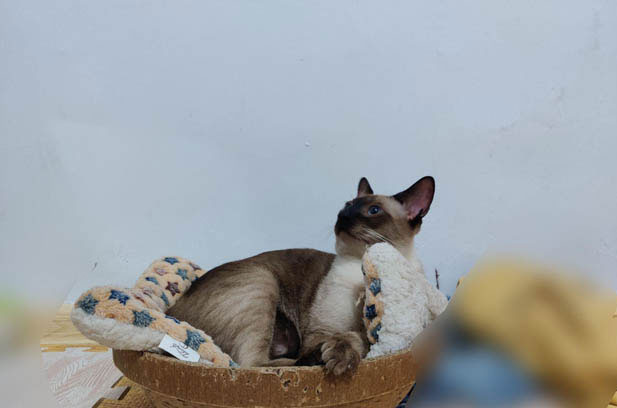Siamese cats have always been adored by cat lovers for their unique appearance and elegant demeanor. However, many Siamese cat owners have noticed an interesting phenomenon: as time passes, their Siamese cats seem to be getting darker and darker. Behind this magical color – changing phenomenon lies a complex and delicate biological mystery.
The key to Siamese cats’ darkening lies in the TYR gene controller within their bodies. The TYR gene is responsible for sending signals for the synthesis of tyrosinase, and tyrosinase controls the process of melanin synthesis and deposition. Simply put, tyrosinase is like a conductor, directing the “dance” of melanin in Siamese cats. As Siamese cats grow older, the amount of tyrosinase synthesized in their bodies gradually increases. This leads to a corresponding increase in melanin synthesis and deposition, ultimately making the Siamese cat’s appearance darker than before.

However, the fundamental reason why Siamese cats get darker and darker is actually the mutation of their TYR gene. This mutation causes changes in the controlled tyrosine synthesis, endowing Siamese cats with a special ability – sensitivity to temperature. Under normal circumstances, tyrosinase has low activity in high – temperature environments, while its activity significantly increases in low – temperature environments. The bodies of Siamese cats are like sophisticated temperature sensors. When the weather gets cold, the activity of tyrosinase in their bodies increases, prompting a large amount of melanin synthesis and deposition, thus making their skin color darker and darker.
This temperature sensitivity has created the unique coat color distribution of Siamese cats. We can observe that parts such as their faces, ears, and tails are usually darker than other parts of their bodies. This is because these areas are at the extremities of the body, dissipate heat more quickly, and have relatively lower temperatures. Tyrosinase is more active in these regions, leading to a large amount of melanin deposition. In contrast, the trunk of the body has a relatively higher temperature, which inhibits the activity of tyrosinase, resulting in a lighter color. It can be said that the coat color distribution of Siamese cats is a unique “map” drawn by temperature.
In daily life, we can also observe many interesting phenomena that further confirm the relationship between the color change of Siamese cats and temperature. For example, when a Siamese cat is sick and has a fever, its body temperature rises, and the originally darker parts may become lighter in color. In cold winters, even Siamese cats that were originally lighter in color will obviously become darker. In addition, if a part of a Siamese cat’s fur is shaved, the newly grown hair will be darker than the surrounding hair. This is because after shaving, the heat dissipation of that part accelerates, the temperature decreases, and the activity of tyrosinase increases, leading to a large amount of melanin synthesis.
The color – changing phenomenon of Siamese cats is not only an interesting biological phenomenon but also provides a vivid example for us to understand the interaction between genes and the environment. It shows us that the mysteries of life are so complex and wonderful. Even common pets around us contain endless scientific knowledge waiting for us to explore. With the continuous development of science and technology, our research on the color – changing mechanism of Siamese cats will also deepen continuously, and in the future, we may discover more amazing secrets about these lovely cats.
Leave a Reply